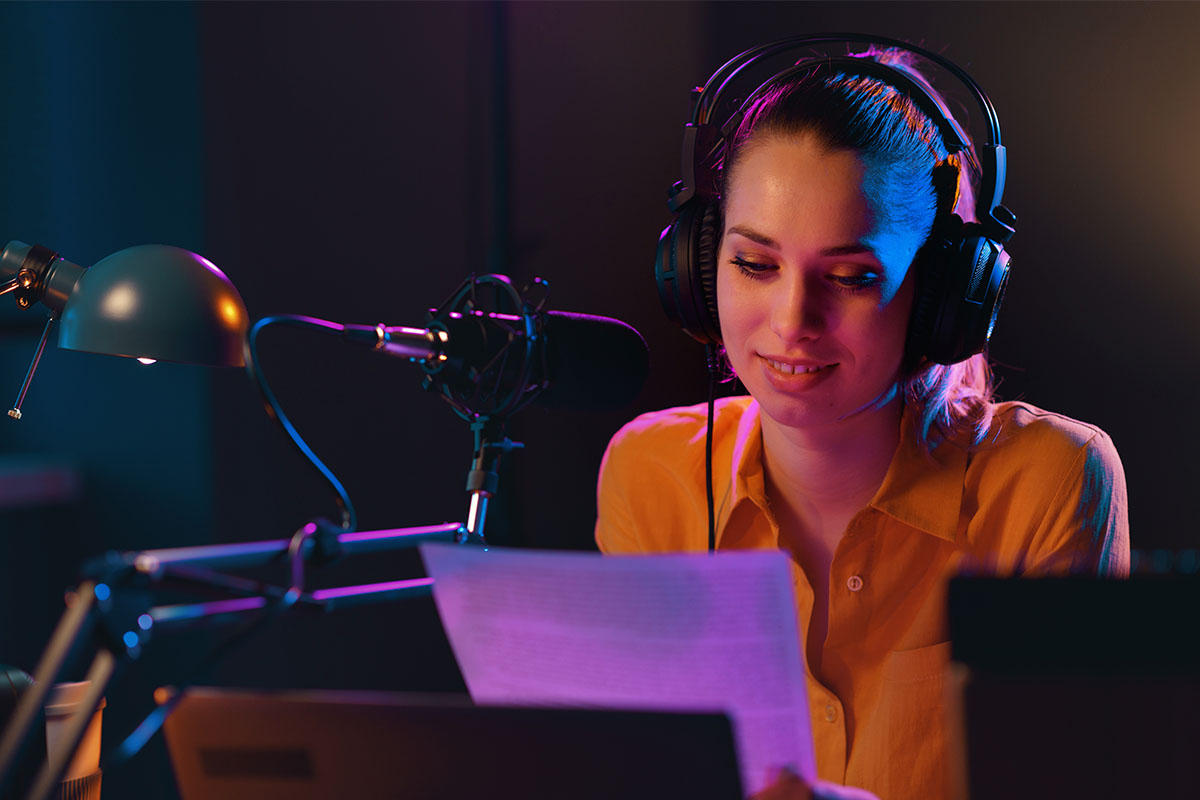
Videos Company: The Art of Voice Matching
Voiceovers have been a part of video production for over a century. It all started in 1900 when Reginald Fessenden transmitted the first voice over radio waves, which laid the groundwork for future voice technology. By the 1920s and 1930s, radio dramas and ads were relying on voice actors to help tell stories, making voiceover work a recognised profession. In 1928, Steamboat Willie introduced synchronised sound in animation, showing the value of voice acting in film. As television grew in the 1950s and 1960s, voiceovers expanded into commercials, documentaries, and educational programmes, becoming a mainstay in media. Now, voiceovers are essential in video production, but getting the right voice for the job can be tricky. That is where voice matching comes in, ensuring the voice fits the video’s tone, audience, and purpose. In this article, we will discuss how voice matching works, the challenges it presents, and how a videos company can handle the process for you.
What is Voice Matching and Why Does It Matter?
Voice matching in video production refers to the practice of selecting the right voice for a particular video project. This involves considering multiple factors such as the tone, pitch, pace, and accent of the voice to ensure that it suits the content’s purpose and connects with the target audience. Whether for a commercial, documentary, animation, or eLearning module, the right voice can enhance the message and significantly impact how it is perceived by viewers.
For a videos company, understanding the importance of voice matching is essential. A mismatch between the voice and the video genre can lead to confusion, disengagement, or misinterpretation of the message. Voice matching, when done right, ensures that the tone and style of the voice complement the visual content.
Key Vocal Characteristics and Their Impact
Several vocal qualities have a significant influence on how a message is conveyed. These include tone, pitch, pace, and accent. Each characteristic contributes to the emotional and psychological impact of the voiceover.
Tone
Tone refers to the quality of the voice, and it communicates emotional intent. A warm and friendly tone may create an inviting atmosphere, while a stern or authoritative tone can lend credibility or seriousness to the content. For example, a video aimed at children may call for a high-pitched, cheerful, and lively tone to maintain their attention, while a corporate training video might demand a calm, composed, and professional tone.
Pitch
Pitch, which refers to how high or low the voice sounds, plays a major role in how the speaker is perceived. High-pitched voices are often associated with enthusiasm, energy, or nervousness, whereas lower-pitched voices may convey authority, calmness, or confidence. For a documentary, a deep, rich voice is often preferred to convey a sense of seriousness and credibility. In contrast, a lighter pitch might be selected for a commercial where a playful or lighthearted approach is desired.
Pace
The speed at which a person speaks, or pace, impacts how easily a message is received. A fast pace can generate excitement, urgency, or suspense, which can be suitable for fast-paced advertisements or action scenes in films. On the other hand, a slower pace is useful in educational videos or tutorials, where clarity and understanding are important. Too rapid a delivery might overwhelm the audience, while too slow a pace could risk losing their attention.
Accent and Dialect
Accent and dialect are often overlooked aspects of voice matching but can be crucial, especially in culturally diverse markets. Accents can add authenticity, relatability, and local flavour to content. For example, using a British accent in a documentary intended for UK viewers might create a sense of familiarity and cultural relevance. On the other hand, a North American accent might be more appropriate for a video aimed at a general international audience. A professional videos company understands the importance of these nuances and will carefully consider how accent and dialect impact audience connection. They will ensure that the voice selected aligns with both the content and the target demographic, avoiding any potential cultural missteps.
Voice Selection for Different Video Genres
Every video genre demands specific vocal qualities that suit the message, tone, and target audience. Below are common genres and the voices that match them best.
Commercials
In commercials, where grabbing the viewer’s attention right away matters, the voice should be persuasive and memorable. A friendly, upbeat tone with clear articulation works well for most advertisements. The voice should be energetic enough to maintain interest but calm enough not to overwhelm the viewer. Commercials often require voices that can convey both enthusiasm and trustworthiness in a short amount of time.
Documentaries
For documentaries, the voice should communicate authority, credibility, and reliability. A deep, resonant voice is commonly used for narrations, as it imparts a sense of seriousness and gravitas. Documentaries often cover complex or educational topics, so the voice must also be clear and steady, allowing the viewer to absorb the information without distraction.
Animation and Video Games
Animation and video games often demand voices that are more dynamic and creative. Characters in these genres require voices that can embody the personality and emotions of the character. From playful, exaggerated tones to dramatic or villainous voices, animation and video game voiceovers are an opportunity for voice actors to demonstrate versatility. At an experienced videos company, a casting director collaborates with voice actors to help them accurately express each character’s distinct qualities, keeping the animation’s tone consistent and believable.
Corporate Videos
Corporate videos often require a professional voice that exudes authority and confidence. The voice should be clear and articulate, as corporate videos typically aim to inform, educate, or persuade. It is important that the voice conveys professionalism without sounding too stiff or detached. A moderate pitch with a calm, measured delivery is generally preferred.
eLearning Modules
eLearning videos demand voices that are both clear and engaging. The goal of these videos is to facilitate learning, so the voice must be easy to understand and paced in a way that allows the viewer to absorb information. eLearning videos often require voices that are friendly and approachable but still authoritative enough to maintain a sense of professionalism.
The Role of Voice Actors and Casting Directors
Voice actors help shape the tone and focus of a video, ensuring the message is understood by the audience. They must have the ability to adapt their vocal qualities to fit the demands of different genres. A skilled voice actor will adjust their tone, pitch, pace, and accent to suit the material, whether it be an animated character or a professional corporate video.
A casting director normally assists a videos company in selecting the right voice for a project. They have a deep understanding of how vocal qualities can impact the final product and are skilled at matching the right voice to the right genre. Their expertise is valuable in ensuring that the chosen voice enhances the video’s effectiveness.
Challenges in Voice Matching
Despite the importance of voice matching, there are several challenges that can arise during the process.
Consistency:
In longer video projects, consistency in the voiceover is important. The voice must remain steady throughout the video to maintain continuity and prevent distraction. In animation or video game projects, where multiple characters may require different voices, keeping track of consistency can be challenging.
Cultural Sensitivity:
When creating content for a global audience, cultural sensitivity must be considered in voice selection. The voice’s accent, tone, or delivery style must not only match the genre but also resonate with the cultural norms and expectations of the intended audience.
Technological Constraints:
Technology also contributes to voice matching. In some cases, recording equipment or editing software may limit the ability to achieve the desired vocal quality. Additionally, advances in AI-generated voices present new challenges and opportunities for voice matching, especially in creating realistic and context-appropriate vocalisations.
How a Videos Company Can Help with Voice Matching
A videos company takes care of all the details involved in voice matching, making the process easier for you. They work with casting directors to find the right voice for your project, making sure it fits the tone and message you want to convey. Once the right voice is chosen, the firm handles the logistics—everything from setting up the recording session to managing the voice talent. When it comes to mixing the voice with the video, they ensure everything is timed correctly and sounds natural. They also manage the sound quality, making sure it blends perfectly with the visuals.
If you are working with different accents or voices for various characters, the production firm keeps everything consistent across the board. They take care of all the technical aspects, so you do not have to worry about any of the details. In short, a videos company makes voice matching easy by handling the process from start to finish. This lets you focus on the bigger picture while they manage the audio side of things.
Final Thoughts
Voice matching may not be the flashiest part of video production, but it is the kind of detail that can make or break a project. It is not just about finding a voice that sounds good—it is about choosing one that aligns with the tone, the message, and even the cultural context of the content. A videos company takes care of all the nuances involved in voice matching, handling the technicalities so you do not have to. They make sure the voice complements the overall production, ensuring consistency and a fit that feels natural. So, while it may seem like a small piece of the puzzle, voice matching plays a big role in making sure everything else clicks into place. In the end, getting the right voice is about more than just matching sound—it is about making sure the voice actually supports the message you want to send. And with the right team behind it, it is a smooth process that brings everything together.
Finding the right voice doesn’t have to be complicated. Let’s make it simple. Get in touch with Sound Idea Digital and we’ll handle the details.
We are a full-service Web Development and Content Production Agency in Gauteng specialising in Video Production, Animation, eLearning Content Development, Learning Management Systems, and Content Production.
Contact us for a quote. | enquiries@soundidea.co.za | https://www.soundideavideoproduction.co.za| +27 82 491 5824 |

